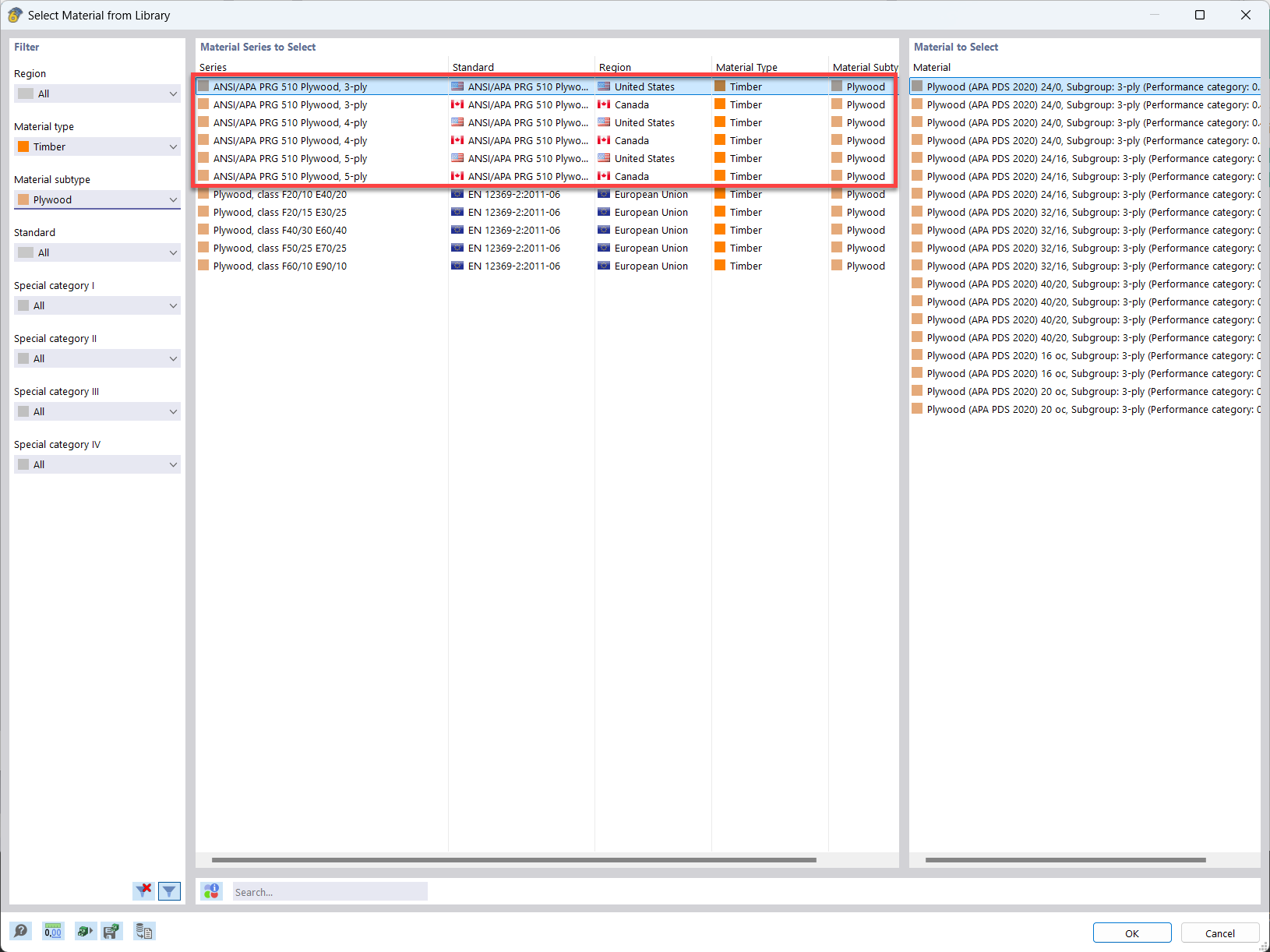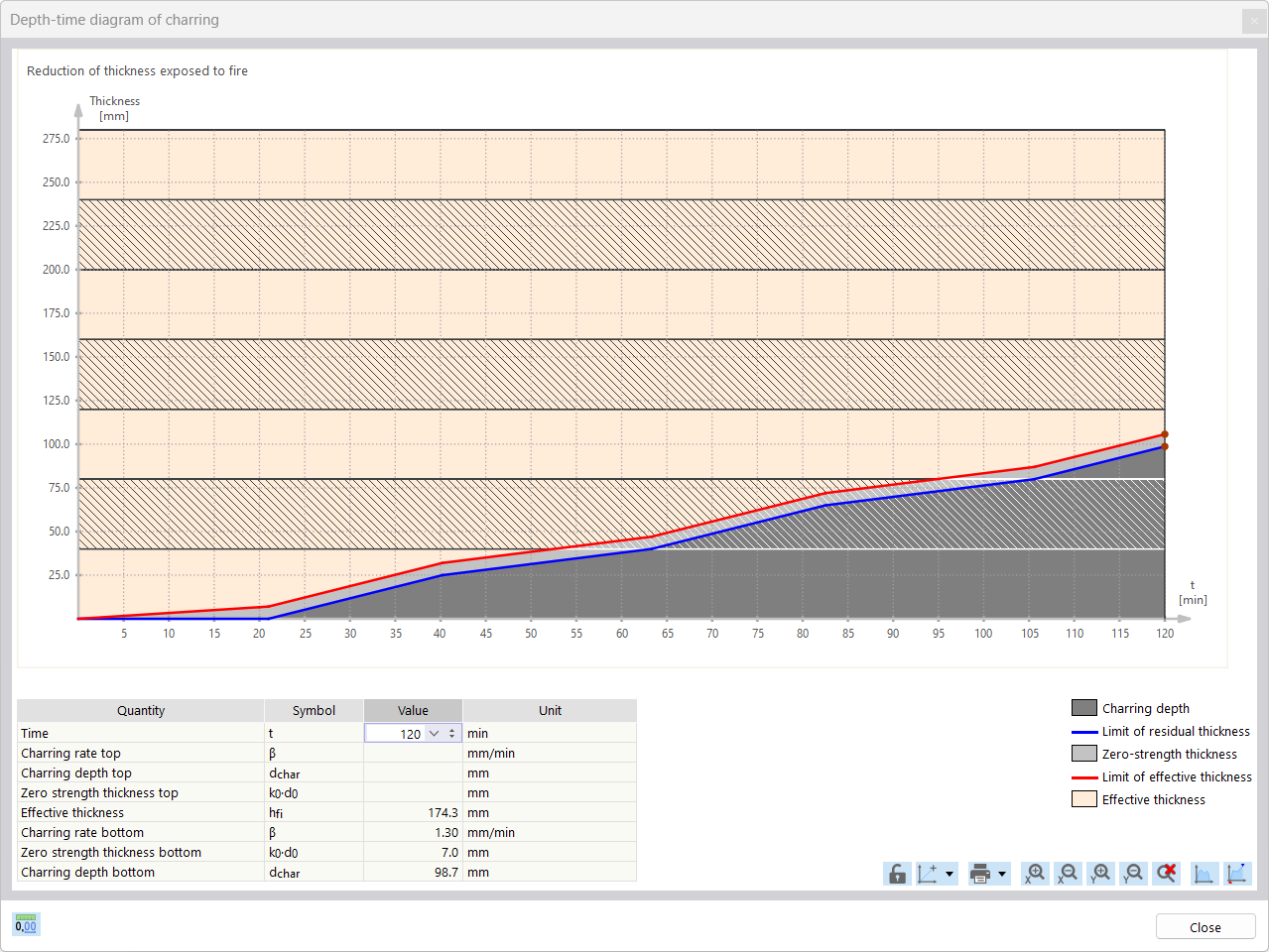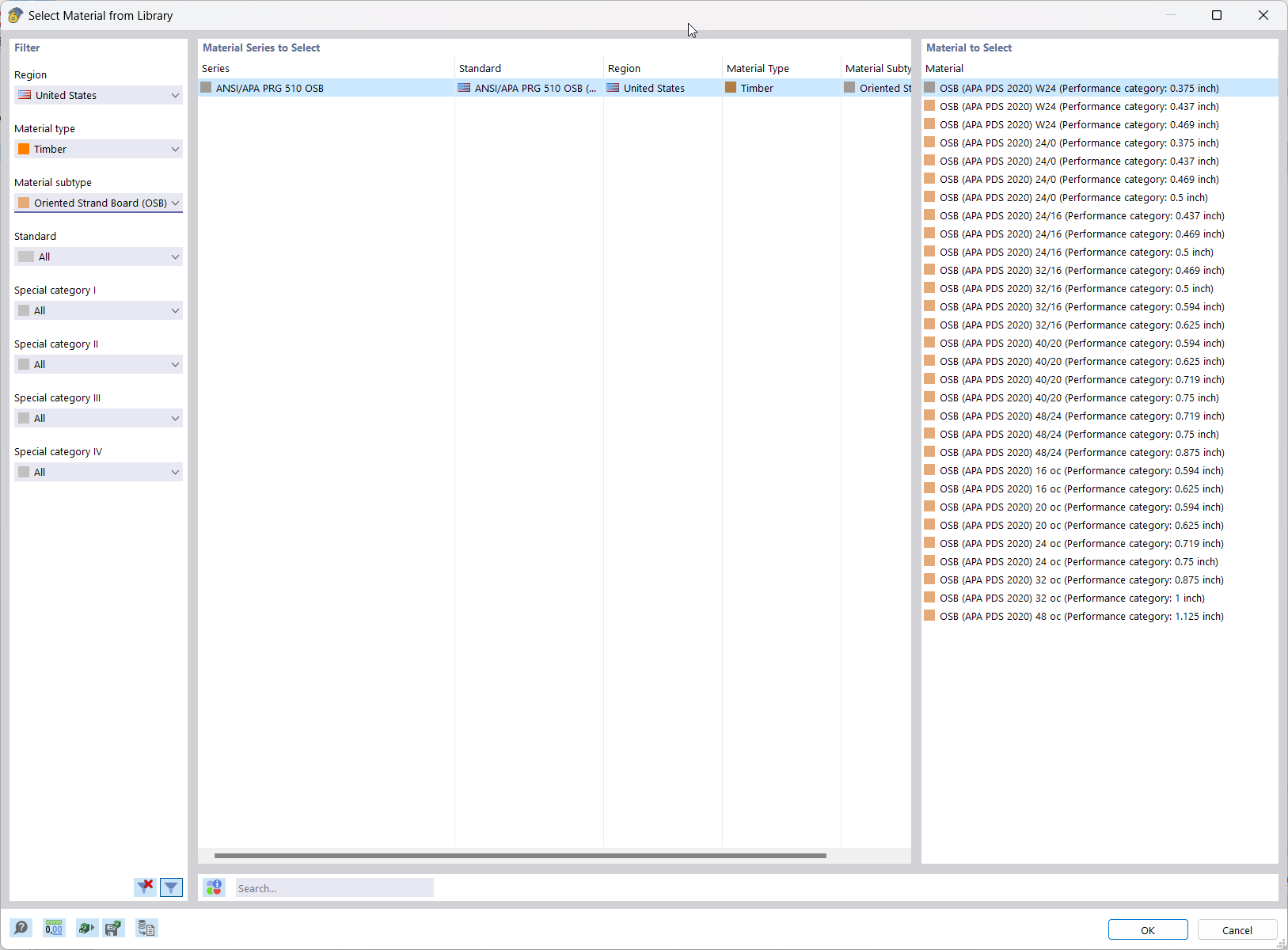In comparison with the gamma method, the framework m has, among others, the following advantages:
- Any position and spacing of the fasteners
- Independent of the number of supports and the conditions of support
- Any load
Modeling
A T-section (web NH C24, flange LH D50) is to be modeled. In addition, the web and the flange are to be connected by coupling members with releases (rigid members) to as many discrete points as possible in order to detect identical deflections of both elements. The next step is to place a member into the position where the fastener is situated. These are rigidly attached to the web and the flange in a flexurally rigid manner and represent the shear flexibility of the fastener via a defined flexural stiffness. A release is placed at the level of the composite joint.
Determining Bending Stiffness
As mentioned above, the flexural stiffness of the stiffness members is now determined to take into account the shear flexibility of the fastener. For this, you can use the formulas shown in the image that result from the structural systems. In the image above, the flexural stiffness was determined neglecting the web and flange stiffness. In the image below, the web and flange stiffness are taken into account.
The resulting value can be edited easily in the Member Type "Definable Stiffness" without the need to create an effective cross‑section. You can determine the slip modulus according to Table 7.1 of EN 1995-1-1. According to this table, a slip modulus of 3469 kN/m results for a screw of d = 6 mm. If this value is inserted into the equation from Image 02 (neglecting the flange stiffness), the result is an effective bending stiffness of 0.601 kN/m². The strain stiffness as well as the shear stiffness can be set to "infinite" with a high value.
Another Alternative (RFEM only)
Another way to calculate compliant composite beams with members is to use line releases. This option is explained here:


















































































.png?mw=600&hash=49b6a289915d28aa461360f7308b092631b1446e)